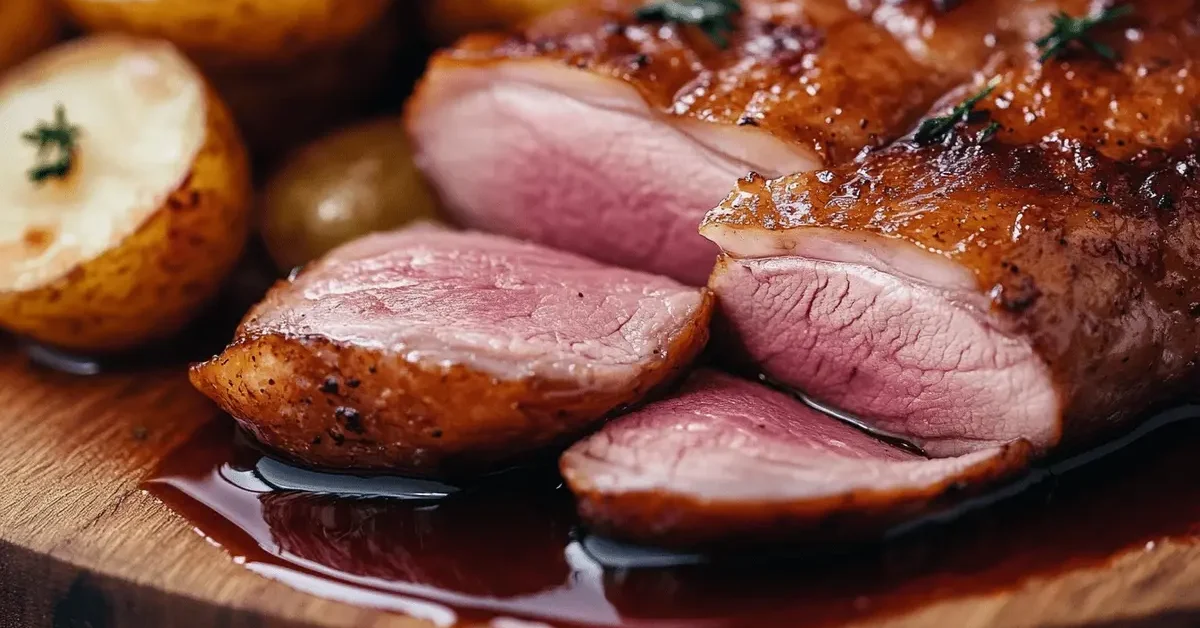I still remember the first time I tried to cook duck breasts for my family. It was a chilly fall evening, and I had decided to surprise everyone with something a little different from our usual chicken or beef dinners. My husband raised an eyebrow when he saw the package on the counter, and my kids—who were much younger at the time—weren’t convinced that “duck” belonged on their dinner plates. But I was determined to find the best way to cook duck breasts.
Cooking has always been my way of bringing people together. Whether it’s a simple weeknight meal or a big family gathering, there’s nothing more satisfying than seeing loved ones share a delicious home-cooked dish. That night, I wanted to create something special—something that would turn an ordinary dinner into a meal to remember.
I had read that the best way to cook duck breasts was to start with a cold pan and let the fat slowly render, creating that crispy, golden-brown skin that makes every bite irresistible. I followed the instructions carefully, scoring the skin just enough to help the fat melt away without cutting into the meat. As the duck sizzled, my kitchen filled with the most incredible aroma—a rich, buttery scent that hinted at something decadent but still comforting. After learning the best way to cook duck breasts, I felt confident in my culinary skills.
When I finally sliced into the meat, I was nervous. Would it be too tough? Would my family even like it? But as soon as my husband took a bite, his eyes widened. “Wow. This is incredible,” he said, reaching for another piece. My kids, still skeptical, hesitated at first—but after one taste, they were hooked. Before I knew it, the whole plate was gone, and I found myself promising to make it again soon.
Since that night, cooking duck breasts has become one of my favorite ways to elevate a simple meal into something truly special. Whether I’m making it for a cozy dinner with my husband or serving it at a holiday gathering, I love how this dish never fails to impress. The crispy skin, the tender, juicy meat—it’s the kind of meal that feels fancy but is surprisingly easy to make at home.
And today, I’m sharing everything I’ve learned so you can create the perfect duck breast for your own family. Let’s dive into the step-by-step guide that will turn this elegant dish into one of your go-to favorites!
To achieve the best way to cook duck breasts, follow the steps carefully and enjoy the process.
Table of Contents
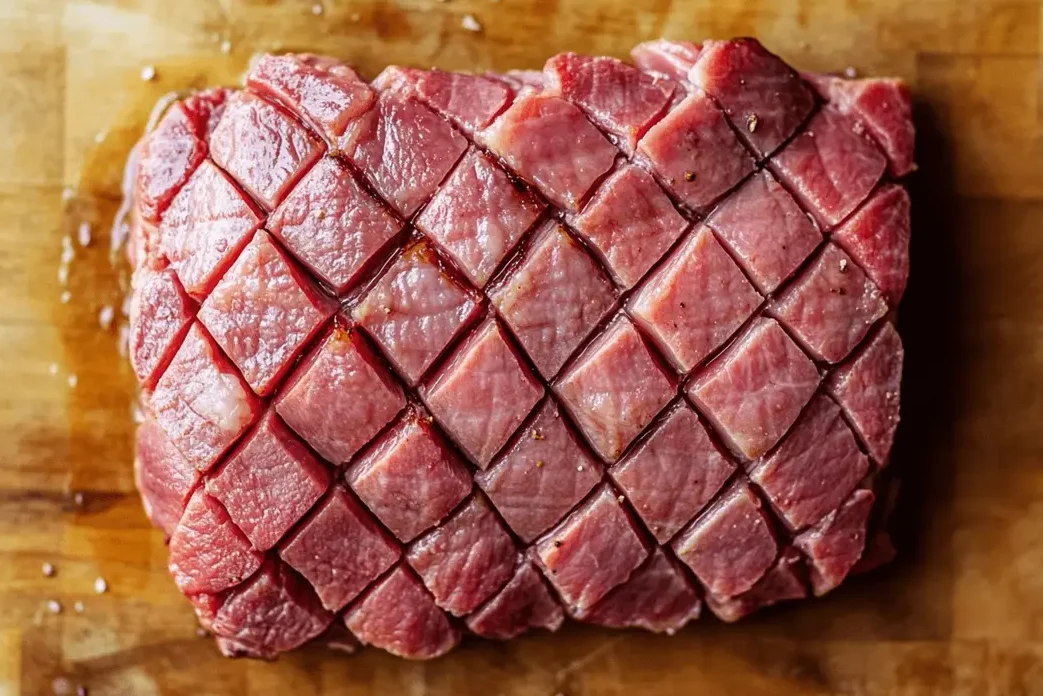
Choosing & Preparing Your Duck Breast
Cooking duck breasts to perfection starts long before you turn on the stove. The secret? Choosing the right cut and preparing it properly. Let’s go over everything you need to know to ensure your duck turns out crispy on the outside and juicy on the inside.
For the best way to cook duck breasts, ensure you have quality ingredients and the right techniques in place.
Wild vs. Farmed Duck: Which Is Better?
When shopping for duck breasts, you’ll typically find two types: farmed (domestic) and wild. Each has its own unique qualities:
- Farmed Duck (Pekin, Muscovy, or Moulard)
- Higher fat content, which makes it easier to achieve crispy skin.
- Milder, slightly sweet flavor.
- Ideal for beginners since it’s more forgiving during cooking.
- Wild Duck
- Leaner meat with a more intense, game-like flavor.
- Requires careful cooking to avoid toughness.
- Best for those who enjoy a bolder taste.
For this recipe, farmed duck breasts are the best choice, especially if it’s your first time cooking duck at home. They offer the perfect balance of fat and tenderness, making it easier to achieve that restaurant-quality texture.
How to Score the Skin for Perfect Cooking
One of the biggest mistakes people make when cooking duck breasts is skipping the scoring step. Scoring the skin helps the fat render properly, preventing a chewy texture and ensuring that gorgeous golden crispiness.
Here’s how to do it:
✔ Use a sharp knife to make shallow cuts in a crosshatch pattern.
✔ Be careful not to cut into the meat—just the fat layer.
✔ Keep the cuts about ½ inch apart for even rendering.
This simple step allows the fat to melt away slowly as it cooks, leading to that irresistible crispy skin we all love.
Pat Dry & Let It Rest: The Key to Crispy Skin
Before cooking, always pat the duck breast dry with a paper towel. Moisture is the enemy of crispiness! If possible, let the duck rest uncovered in the fridge for about an hour. This helps the skin dry out further, which is a little trick chefs use to achieve extra crunch.
Now that we’ve covered preparation, let’s move on to the best cooking methods!
The Best Cooking Methods for Duck Breast
There are many ways to cook duck breasts, but not all methods deliver the perfect balance of crispy skin and tender meat. Below are the three best techniques, ranked by ease and results.
1. Pan-Searing & Oven-Finishing (Best Method!)
If you want the best way to cook duck breasts, this is it. Pan-searing allows the fat to render slowly, while finishing in the oven ensures even cooking. Here’s how:
1️⃣ Start with a cold, dry pan—no oil needed. The duck’s natural fat will do the work.
2️⃣ Place the breast skin-side down and cook over medium-low heat for 6-8 minutes.
3️⃣ Once the skin is golden and crispy, flip the duck and transfer it to a preheated 375°F oven for 4-5 minutes.
4️⃣ Remove from the oven and let it rest for 5-7 minutes before slicing.
This method gives you a crispy, flavorful crust while keeping the inside tender and juicy.
2. Grilling for a Smoky Flavor
If you love the smoky taste of grilled meats, you can cook duck breasts on an outdoor grill. Just be sure to:
✔ Use medium heat to prevent burning.
✔ Cook skin-side down first to crisp the fat.
✔ Flip only once and cook to 130°F for medium-rare.
Grilling adds a slightly charred, smoky flavor that pairs beautifully with fruit-based sauces.
Remember, the best way to cook duck breasts is to pay attention to the details.
There’s no single method, but knowing the best way to cook duck breasts can elevate your meal.
Understanding the best way to cook duck breasts begins with the right cooking method.
3. Slow Roasting for Even Cooking
The best way to cook duck breasts combines patience and careful preparation.
For a foolproof method that’s hands-off, slow roasting is a great option. Set your oven to 275°F, place the duck breast on a wire rack, and cook for about 45 minutes, flipping once. This method slowly renders the fat while keeping the meat juicy.
The Best Way to Cook Duck Breasts (Perfectly Crispy & Juicy!)
Now that we’ve covered how to choose and prepare duck breasts, it’s time to cook them to perfection. Follow this step-by-step guide to achieve crispy skin, tender meat, and restaurant-quality results—right in your own kitchen!
Step 1: Choosing the Best Ingredients
For the best results, start with high-quality duck breasts. Here’s what to look for:
Every chef knows that the best way to cook duck breasts includes respect for the ingredients.
✔ Farmed Duck (Pekin, Muscovy, or Moulard) – These have a rich, mild flavor with the perfect amount of fat for crispy skin.
✔ Even Fat Layer – Look for duck breasts with a thick, uniform fat cap.
✔ Fresh or Frozen – If using frozen duck, thaw it completely in the refrigerator overnight before cooking.
It’s crucial to remember the best way to cook duck breasts involves following key steps.
Step 2: Preparing the Duck
Using the best way to cook duck breasts will impress your guests every time.
Proper preparation is the key to crispy skin and juicy meat. Take a few minutes to prep your duck breasts before cooking.
Pat Dry & Score the Skin
- Use paper towels to pat the duck completely dry—moisture prevents crispiness.
- With a sharp knife, lightly score the skin in a crosshatch pattern (about ½ inch apart).
- Be careful not to cut into the meat—just the fat layer!
Season Simply
- Sprinkle both sides with coarse sea salt and black pepper.
- If desired, add fresh herbs like thyme or rosemary for extra flavor.
Pro Tip: For ultra-crispy skin, let the duck rest uncovered in the fridge for 1 hour before cooking.
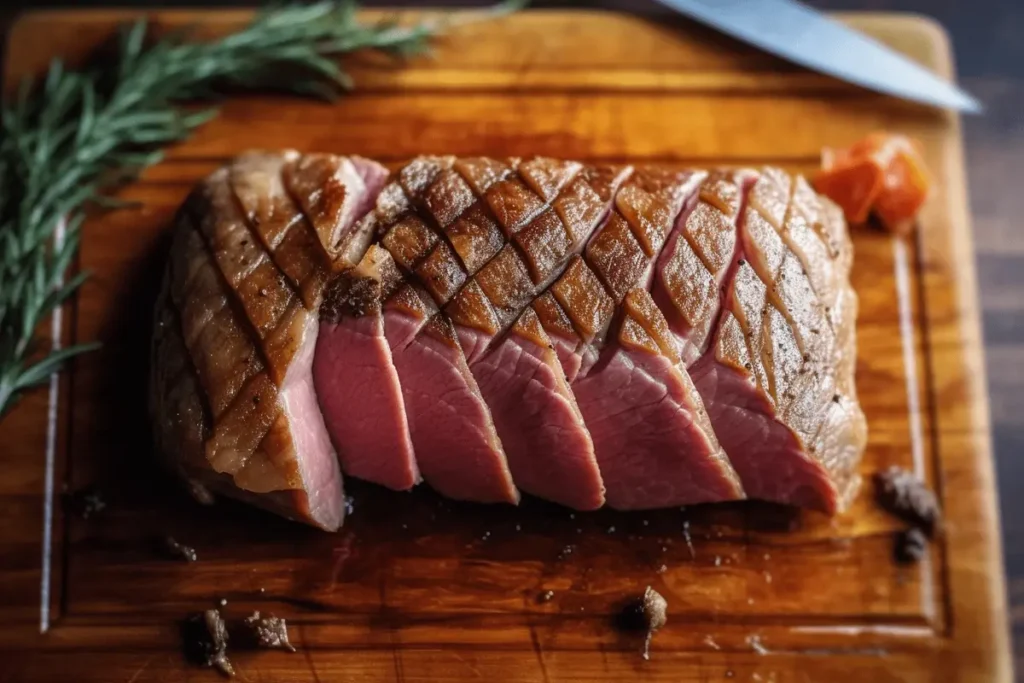
Step 3: Cooking Instructions (Crispy Skin & Juicy Meat!)
The best way to cook duck breasts is by pan-searing, which slowly renders the fat and creates a crispy, golden-brown crust.
1️⃣ Start with a Cold, Dry Pan
- Place the duck breast skin-side down in a cold cast-iron or stainless-steel pan.
- No oil is needed! The fat from the duck will naturally render.
2️⃣ Slowly Render the Fat
- Turn the heat to medium-low and let the fat render for 6-8 minutes.
- As it cooks, use a spatula to press the duck gently, ensuring even contact with the pan.
- You’ll know it’s ready when the skin is deep golden brown and crispy.
3️⃣ Flip & Finish Cooking
- Once the skin is crispy, flip the duck and cook the other side for 2-3 minutes over medium heat.
- For medium-rare, cook until the internal temperature reaches 130°F.
4️⃣ Let It Rest
- Remove from heat and let the duck rest for 5-7 minutes.
- This allows the juices to redistribute, keeping the meat tender and flavorful.
Step 4: Slicing & Serving
✔ Use a sharp knife and slice the duck against the grain for maximum tenderness.
✔ Serve warm with a simple side of roasted vegetables, mashed potatoes, or a crisp salad.
✔ For extra flavor, drizzle with a fruit-based sauce like orange glaze or balsamic reduction.
Pro Tip: Save the rendered duck fat! It’s perfect for cooking crispy potatoes or sautéing veggies.
Pro Tips, Best Pairings & Common Mistakes to Avoid
Cooking duck breasts is simple, but a few expert tricks can take your dish from good to truly unforgettable. Here are my favorite pro tips, best pairings, and common mistakes to avoid so your meal turns out perfect every time.
Pro Tips for Perfectly Cooked Duck Breasts
✔ Start with a Cold Pan – This helps render the fat slowly, creating extra-crispy skin without burning.
✔ Don’t Rush the Cooking Process – Keep the heat at medium-low while searing the skin to avoid uneven cooking.
✔ Use a Meat Thermometer – For perfect doneness, aim for 130°F for medium-rare or 140°F for medium.
✔ Let It Rest Before Slicing – Giving the meat 5-7 minutes to rest keeps the juices inside, ensuring tender bites.
✔ Slice Against the Grain – This makes the duck easier to chew and enhances its texture.
Best Side Dishes & Sauce Pairings
Duck has a rich, flavorful profile, making it perfect for pairing with vibrant sauces and complementary side dishes. Here are some of my top recommendations:
Best Sauces for Duck Breast
- Orange Glaze – The sweet, citrusy notes balance the savory meat beautifully.
- Balsamic Reduction – A tangy, slightly sweet sauce that enhances the duck’s richness.
- Garlic Herb Butter – A simple but flavorful option for a classic finish.
Perfect Side Dishes
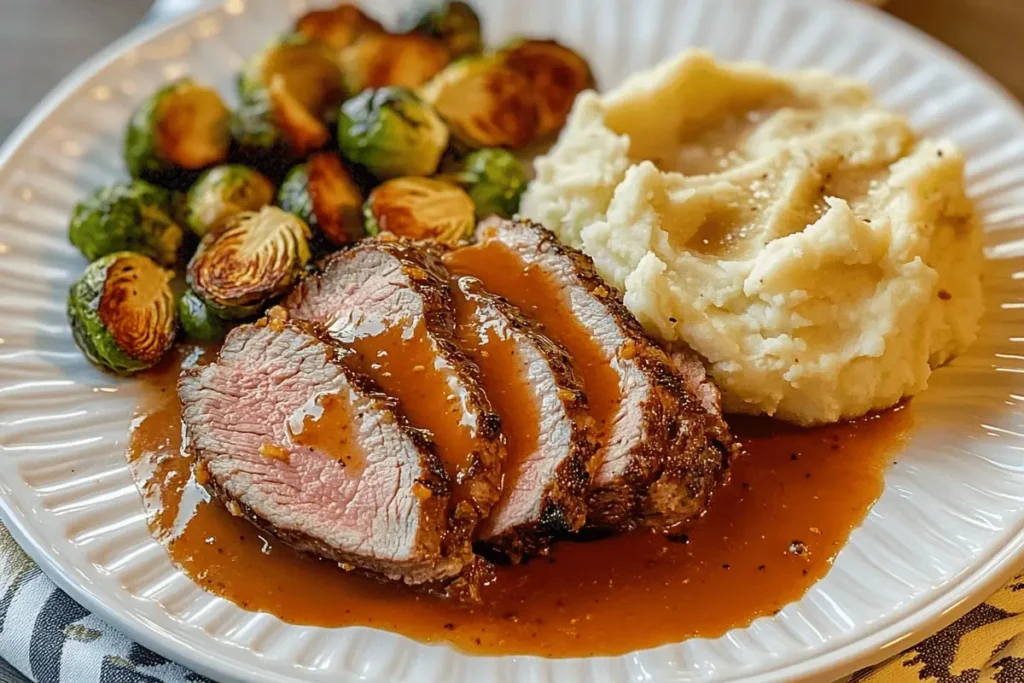
- Crispy Roasted Potatoes – Cooked in leftover duck fat for extra crunch.
- Garlic Green Beans – A light and fresh contrast to the rich duck.
- Wild Rice Pilaf – Adds a nutty, earthy element that pairs well with the duck’s natural flavors.
💡 Want to make your duck even more tender? Check out this helpful guide: How to Make Duck Breasts More Tender
Common Mistakes to Avoid
🚫 Cooking on High Heat Too Soon – This burns the skin before the fat has time to render.
🚫 Skipping the Scoring Step – Properly scoring the skin allows fat to melt away evenly.
🚫 Overcooking the Meat – Duck is best enjoyed medium-rare to medium; overcooking makes it tough and dry.
🚫 Forgetting to Rest the Duck – Cutting too soon lets the juices escape, leaving you with dry meat.
More Cooking Inspiration
Looking for more delicious recipes to try? If you love hearty meals, check out our Main Dishes collection—perfect for family dinners or special occasions. Or, if you’re in the mood for something sweet or snackable, browse our Snacks, Desserts & Bites section for tasty treats. There’s always something new and exciting to cook!
FAQs About Cooking Duck Breasts
Lastly, mastering the best way to cook duck breasts can lead to a lifetime of delicious meals.
With practice, you’ll find the best way to cook duck breasts that works for you.
1. Should duck breast be cooked rare or well done?
For the best texture and flavor, medium-rare (130°F) is ideal. Cooking it well-done makes it dry and chewy.
2. Why do you cook duck breast in a cold pan?
Starting with a cold pan allows the fat to render slowly, creating extra-crispy skin without burning.
3. How do I know when duck breast is done?
Use a meat thermometer:
Medium-rare: 130°F
Medium: 140°F
Well-done (not recommended): 155°F+
4. What’s the best sauce to serve with duck breast?
Classic options include orange glaze, balsamic reduction, and garlic herb butter.
5. How do I reheat leftover duck without drying it out?
Warm it in a low oven (300°F) for 5-7 minutes or pan-sear quickly on medium heat to restore crispiness.
6. Can I cook duck breast in an air fryer?
Yes! Cook at 375°F for 12-15 minutes, flipping halfway through, for crispy skin and juicy meat.
Explore the versatile options for the best way to cook duck breasts to suit your taste.
Your experience with the best way to cook duck breasts can lead to culinary mastery.
By practicing the best way to cook duck breasts, you’ll become more skilled over time.
Ultimately, knowing the best way to cook duck breasts is an art that develops with experience.
Print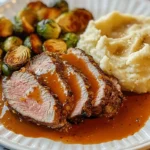
Perfectly Cooked Duck Breasts
- Total Time: 25 minutes
- Yield: 2 servings
Description
A step-by-step guide to cooking duck breasts with crispy skin and tender meat.
Ingredients
- ✔ 2 duck breasts
- ✔ 1 tsp coarse sea salt
- ✔ ½ tsp black pepper
- ✔ 1 sprig fresh thyme (optional)
Instructions
1️⃣ Prepare the Duck
- Pat the duck breasts dry with paper towels.
- Score the skin in a crosshatch pattern, being careful not to cut into the meat.
- Season both sides with salt and pepper.
2️⃣ Cook the Duck
- Place the duck breasts skin-side down in a cold pan.
- Turn the heat to medium-low and cook for 6-8 minutes until the skin is crispy and golden brown.
- Flip the duck and cook for 2-3 more minutes until the internal temperature reaches 130°F (for medium-rare).
3️⃣ Rest & Serve
- Remove from heat and let the duck rest for 5-7 minutes before slicing against the grain.
- Serve warm with roasted potatoes, green beans, or a balsamic glaze
Notes
🔹 Serving Suggestions:
✔ Pair with roasted potatoes, sautéed greens, or wild rice for a balanced meal.
✔ For a gourmet twist, drizzle with an orange glaze or balsamic reduction.
✔ Great for special occasions or romantic dinners—serve with a glass of sparkling water infused with citrus.
✔ Leftover duck? Use it in salads, wraps, or stir-fries the next day.
🔹 Pro Tips:
✔ For the crispiest skin, let the duck breasts rest uncovered in the fridge for 1 hour before cooking.
✔ Always start in a cold, dry pan—this allows the fat to render properly for golden, crispy skin.
✔ Use a meat thermometer to ensure medium-rare (130°F) for the best texture.
✔ Save the rendered duck fat—it’s perfect for roasting vegetables or making crispy potatoes.
✔ Slice against the grain for the most tender bites.
- Prep Time: 10 minutes
- Cook Time: 15 minutes
- Cuisine: American
Nutrition
- Calories: 250 kcal
- Sodium: 400mg
- Fat: 18g
- Protein: 20g

